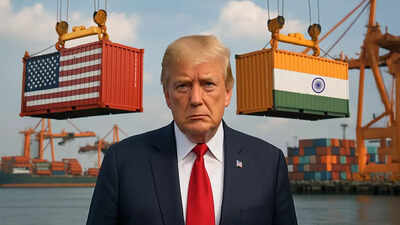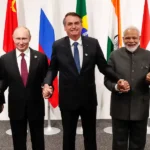Tariff Trade Tensions
US President Donald Trump’s decision to impose a 50% tariff on Indian exports, citing India’s Russian oil purchases, has sparked global tariff trade tensions. This bold move could severely disrupt India’s key export sectors and reshape the broader energy trade landscape.

Image: Times of India
Trump’s Tariff Escalation
On August 6, 2025, President Donald Trump signed an executive order doubling the existing tariff on Indian exports to 50%. He directly linked this increase to India’s ongoing imports of Russian crude oil, which he claims indirectly fund Russia’s war in Ukraine. Trump had earlier announced a 25% tariff on July 30, taking effect on August 7. The new round of tariffs will start on August 27.
India currently imports around 1.75 million barrels of Russian oil per day. This heavy dependence has drawn criticism from the West. Trump’s decision aims to penalize New Delhi and apply pressure during stalled trade talks. In particular, sectors like textiles, leather goods, and marine exports are expected to bear the brunt of these additional duties.
Economic Impact on India
The 50% tariff now affects more than half of India’s $86.5 billion in annual exports to the US, as reported by the Federation of Indian Export Organisations (FIEO). Exporters fear the higher tariffs will make Indian products less competitive, especially when compared to alternatives from Vietnam and China that face lower duties.
According to ICICI Securities economist A. Prasanna, if these tariffs persist, they could hinder India’s GDP growth and complicate future trade negotiations. Nevertheless, not all sectors will suffer equally. Pharmaceuticals, electronics, and energy-related exports are exempt from the hike.
In response, India’s Commerce Minister Piyush Goyal has begun consulting industry leaders. He plans to explore relief measures such as financial support for vulnerable sectors and initiatives to promote local brands more aggressively in global markets.
India’s Defiant Response
India’s Ministry of External Affairs rejected the tariff hike as “unfair and unreasonable.” Officials stressed that India’s oil purchases reflect its market-driven strategy to secure affordable energy for over 1.4 billion people.
Notably, Indian authorities also pointed out that Western nations—including the US—continue trading with Russia in various forms. Thus, the tariffs appear selectively punitive. Despite narrowing price differences, Indian refiners still prefer Russian crude due to cost benefits.
To reduce dependency, India has begun exploring alternative oil sources from the US and the Middle East, signaling a broader diversification strategy.
Read More..- Noida Man’s Account Shows ₹1 Septillion, Kotak Denies Glitch
Geopolitical and Trade Implications
Trump’s aggressive stance appears to serve a dual purpose: punish India for dealing with Russia and pressure it to concede in broader trade negotiations. He is pushing for India to reduce duties on American agricultural and industrial imports.
Additionally, Trump has threatened secondary sanctions on other countries continuing Russian trade ties, with an August 8 deadline looming. India’s refusal to yield may embolden other BRICS nations, reinforcing the bloc’s cohesion and potentially shifting global trade alliances.
If India deepens its strategic alignment with Russia and China, the resulting trade realignment could pose new challenges for US economic influence in Asia and beyond.














